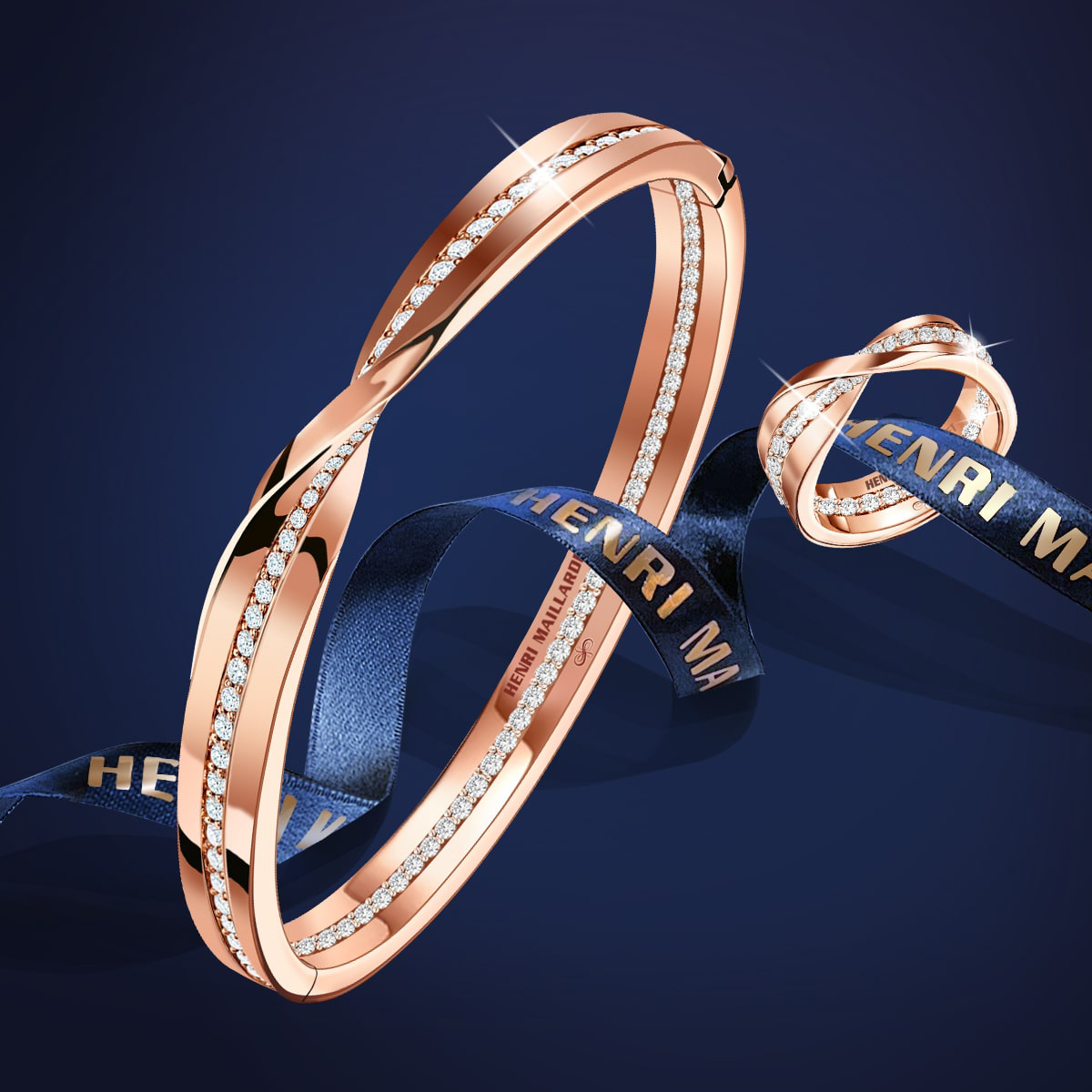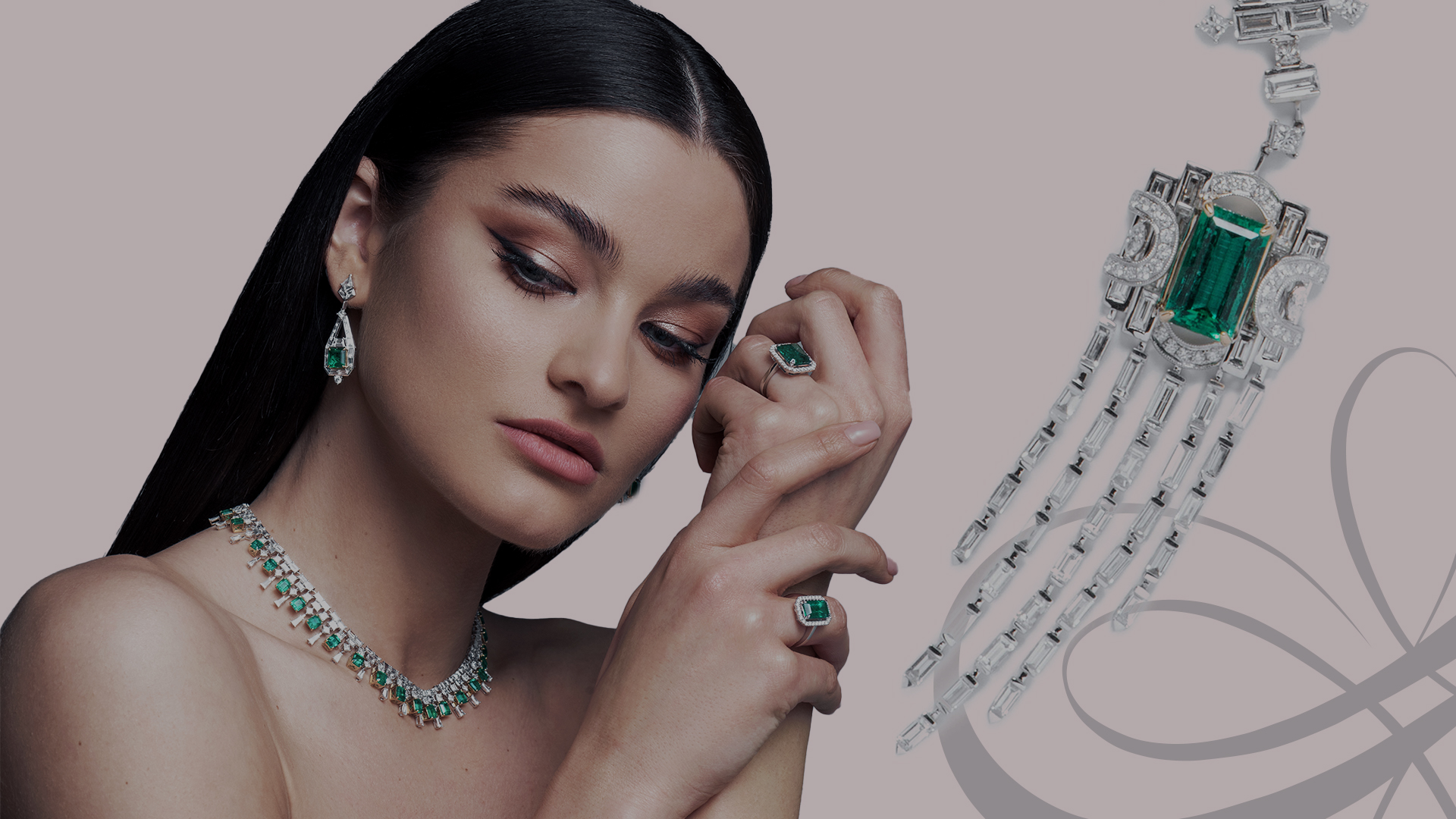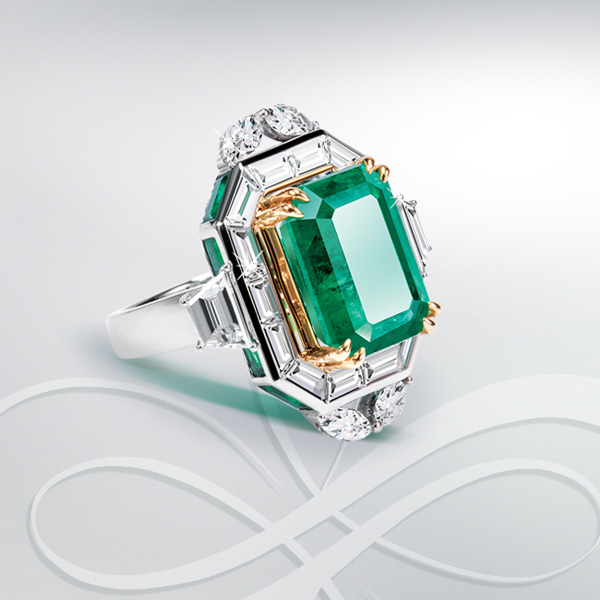 READ ARTICLE
READ ARTICLE

High jewellery, like haute couture, commands the question as to where luxury product ends and art begins.
Despite a climate of financial insecurity and fluctuating global markets, one tier of the jewellery industry is thriving: high jewellery – or, in French, haute joaillerie. Essentially, high jewellery refers to the most expensive pieces of jewellery available from the big-name houses, many of which are one-of-a-kind, cost millions due to materials, workmanship and signature, and include extremely valuable gemstones as distinctive features.
It’s easy to believe there is a synergy between haute couture and high jewellery; both exemplify the best in creativity and materials, and offer designs that drive the imagination beyond the possible. But the highest form of jewellery art does more than inspire fantasy and imagination. It also keeps old craftsmanship alive, and offers a tangible and portable way to preserve investments. In this way, high jewellery remains an attractive market in its own right.
Originally laid out in 1702, the Place Vendôme in Paris is where one goes to see a lot of high jewellery in one place. Since the beginning, the grandeur and exclusivity of the square attracted leading global luxury brands to set up shops, and this has remained unchanged for generations. The grand jewellery houses of Place Vendôme still unveil collections with exclusive Parisian parties, culminating with discreet private jewellery viewings. There, clients select their favorite pieces knowing that, once sold, they will never be made again. This kind of exclusivity is thrilling.
High jewellery collections instill a desire to collect one-of-a-kind jewels, much in the same way that art lovers build art collections. Numerous buyers are, indeed, avid collectors with a hedonist approach to high jewellery. It borrows from the time when people wore high jewellery as signs of power, glory and status.
How did high jewellery come about? Firstly, jewellery has always been a part of our history. Of course, the jewellery of the old days was not made like the one today – and it was nothing like high jewellery. Ancient people wore jewellery made of feathers, bones, shells, and colored pebbles, but these pieces were admired for their beauty and durability and made into adornments. Diamonds were not popular until sometime around 1300.
The earliest finding of jewellery was dated around 25,000 years ago, and it was a necklace later found in a cave in Monaco. Back when jewellery items were also functional objects, somebody had designed a purely ornamental piece! The need to feel accepted, to belong, was as important then as it is now; belonging reflects a need too, after all. But, if it was a one-of-a-kind necklace, it could be that the history of high jewellery also starts there.
In early societies, jewellery was mainly worn to protect against bad luck and illness. From these myths evolved jewellery made into symbols thought to give the wearer control over fertility, wealth and love. jewellery was also worn for its magical properties, and this still fascinates us even today. It wasn’t until much later that jewellery came to denote human connection and commitment.
Jewellery has always played a more important role than that of a beautiful garment. It marked a person’s belonging and adherence to a community. Wedding rings symbolize the commitment two people had for each other. Once, in Europe, only the wealthy and high-ranking church officials were allowed to wear gemstones; they were a sign of good investing habits and power. Following the trail or evolution of jewellery from the ancient worlds to our days, we can see how jewellery evolved over time and became… high jewellery.
Today, the demand in high jewellery vastly exceeds the supply, so luxury jewelers are increasing the number of high-priced pieces they produce.
Owning high jewellery is a tangible way of investing, which in an uncertain world is a very attractive thing. The other attractive part? Exclusivity. Consumers want their pieces to say, “I have this beautiful item– and it is unique.” As a result, at the highest end of the jewellery market, colored diamonds and deeply hued gemstones are becoming most popular.
The key factor in the pieces’ desirability is the gems’ scarcity indeed. The truth is that the gems are very difficult to find. It’s usually one stone in a million of stones – or, in the case of blue diamonds, one stone in tens of millions of stones! Since you won’t find another one for years, you won’t be able to recreate the pieces.
The high jewellery business has also its own challenges, one being a massive shift in its traditional clientele. With high jewellery business no longer being driven by wealthy families collecting treasures to hand down, along comes the new wave of clients. Houses are making efforts to appeal to the 21st century consumer: younger, digitally savvy shoppers with a fresh, edgier perspective, looking for unique expressions of their individuality.

No more occasion- or investment-led buying only, either. Self-gifting by independently wealthy women who want to make purchases for themselves is on the rise, as it is mothers following the tastes of their daughters rather than vice versa. As a consequence, houses known for classic, stone-centric creations are stepping away from traditional and embracing a new approach to high jewellery. From rethinking pieces to transforming their whole aesthetic, they now focus on simple, delicate styles with unexpected materials or streetwear-infused designs.
These are bold experiments. Collections can be years in the planning, but clientele and buyer behaviour is changing, and the high jewellery market must keep up. For example, many of the new generation of high jewellery brands have an appointment-only showroom where their pieces are made in collaboration with the clients. The millennials are asking for bespoke pieces that reflect their unique personality and sense of style. They have been given conventional jewellery from big-name houses at a young age; now, they dream of something distinctive and different, either mirroring their contemporary art tastes or complementing their latest haute couture purchases.
And this happens everywhere. According to Manuel Arnaut, editor in chief of Vogue Arabia, exclusivity is so important in the Middle East that houses are offering unique designs and lines for the region, catering to local tastes. “Social interaction is important and people will buy specific brands and products just because their peers are buying it,” he said. “While in Europe buying a brand that no one knows is seen as cool, here people like to invest in famous brands. If an iconic design comes in an extremely expensive and unique limited edition, all the better.”
The increasing importance of individualism is clear to industry figures who are looking to start complementing top clients’ purchases with exceptional experiences. The new wave of clients wants more. And high jewellery is listening. If you have everything, you want things no one else can have.
But while deviations from classic creative and commercial approaches become more profitable and houses are suffering from declining footfall and competition from niche independent brands, a presence in iconic cities (Paris, London, New York, Geneva, Zurich, Hong Kong) is still cherished. It gives houses the ‘credibility anchor’ to sell a greater range of products to the broader public, while ensuring they get to keep – and satisfy – their top clients.
Even if lockdowns are temporarily impacting global jewellery trends with thousands of store closures and the cancellation of trade shows and events, creativity is still soaring in terms of how the high jewellers market shows and sells collections. Consumers are increasingly comfortable shopping online for jewellery, and there is further scope for eCommerce advancement, particularly across social media channels.
Another silver lining? Houses continue to understand the drivers and behaviours from different demographics in order to create effective growth strategies. Consumers need to also see reflections of themselves in high jewellery marketing, and brands know it.
We cannot wait to see what comes next in high jewellery, but we already know the word to define it: innovative.
Be the first to discover our news.